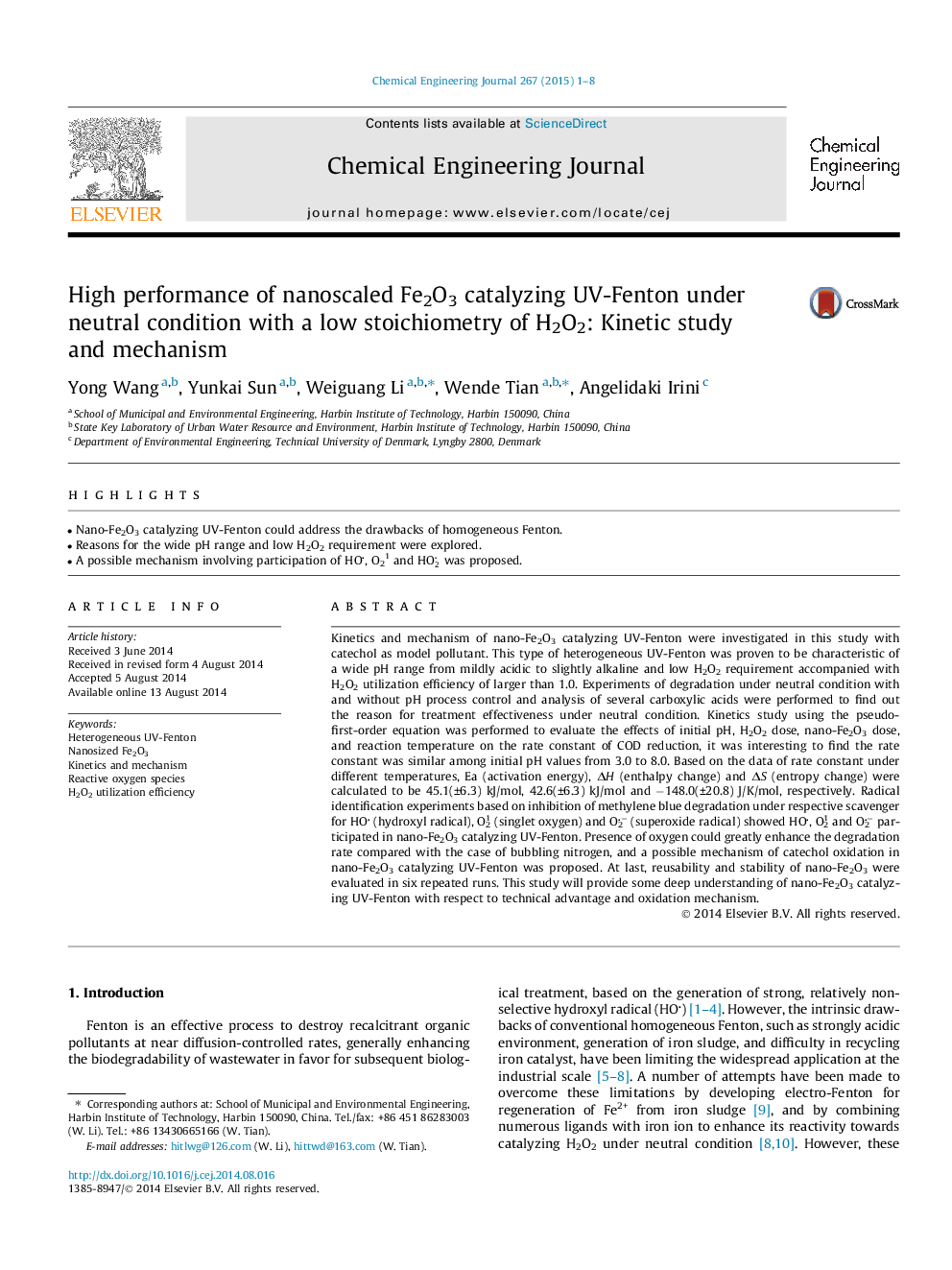| کد مقاله | کد نشریه | سال انتشار | مقاله انگلیسی | نسخه تمام متن |
|---|---|---|---|---|
| 146599 | 456374 | 2015 | 8 صفحه PDF | دانلود رایگان |

• Nano-Fe2O3 catalyzing UV-Fenton could address the drawbacks of homogeneous Fenton.
• Reasons for the wide pH range and low H2O2 requirement were explored.
• A possible mechanism involving participation of HO, O21 and HO2 was proposed.
Kinetics and mechanism of nano-Fe2O3 catalyzing UV-Fenton were investigated in this study with catechol as model pollutant. This type of heterogeneous UV-Fenton was proven to be characteristic of a wide pH range from mildly acidic to slightly alkaline and low H2O2 requirement accompanied with H2O2 utilization efficiency of larger than 1.0. Experiments of degradation under neutral condition with and without pH process control and analysis of several carboxylic acids were performed to find out the reason for treatment effectiveness under neutral condition. Kinetics study using the pseudo-first-order equation was performed to evaluate the effects of initial pH, H2O2 dose, nano-Fe2O3 dose, and reaction temperature on the rate constant of COD reduction, it was interesting to find the rate constant was similar among initial pH values from 3.0 to 8.0. Based on the data of rate constant under different temperatures, Ea (activation energy), ΔH (enthalpy change) and ΔS (entropy change) were calculated to be 45.1(±6.3) kJ/mol, 42.6(±6.3) kJ/mol and −148.0(±20.8) J/K/mol, respectively. Radical identification experiments based on inhibition of methylene blue degradation under respective scavenger for HO (hydroxyl radical), O21 (singlet oxygen) and O2− (superoxide radical) showed HO, O21 and O2− participated in nano-Fe2O3 catalyzing UV-Fenton. Presence of oxygen could greatly enhance the degradation rate compared with the case of bubbling nitrogen, and a possible mechanism of catechol oxidation in nano-Fe2O3 catalyzing UV-Fenton was proposed. At last, reusability and stability of nano-Fe2O3 were evaluated in six repeated runs. This study will provide some deep understanding of nano-Fe2O3 catalyzing UV-Fenton with respect to technical advantage and oxidation mechanism.
Journal: Chemical Engineering Journal - Volume 267, 1 May 2015, Pages 1–8